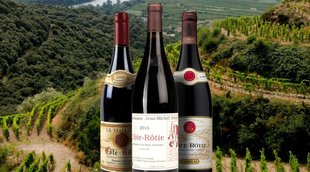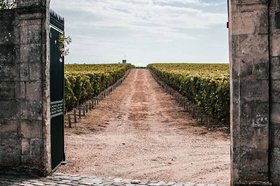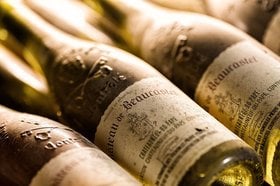Cote Rotie AOC, Rhone Valley: 10 Best Wines, Prices (2025)
Cote Rotie produces some of the finest Syrah wines of the Northern Rhône Valley.
These deep ruby-red wines are perfect for drinking young and storing in your wine cellar as a long-term wine investment.
Let’s explore the region’s main wine-producing villages, best wines, their investment potential, and food pairings. We’ll also explore it’s vineyards, winemaking practices, and history.
Further reading
- Discover other Enticing Syrah Wines to buy in 2024.
- Take a tour of the diverse Rhone Wine Region and its best wines.
A Glance at the Côte Rôtie appellation
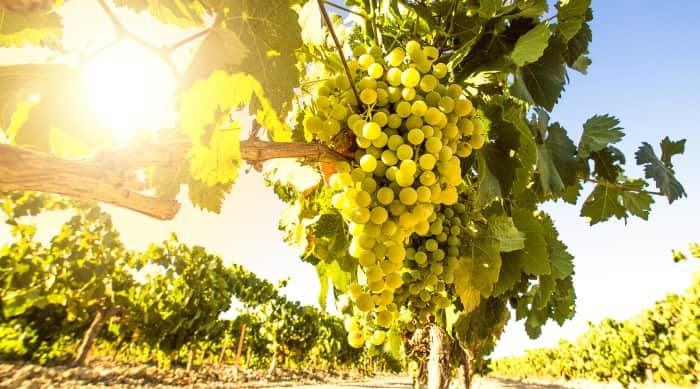
Here are some essential facts about the Côte Rôtie appellation:
Where is Cote Rotie?
Cote Rotie is the northernmost appellation (Appellation d’Origine Controlee) of Cotes du Rhône in Rhone Valley.
The Northern Rhône appellations, including Cote du Rhône, have some of the oldest vines in the world. These old vines are often considered to be the reason for the rich flavors of Cote Rotie red wines.
What is Cote Rotie Wine?
Most Cote Rotie wines are Syrah varietals or blends. These wines can be blended with up to 20% Viognier. Cote Rotie AOC is one of the few Rhone appellations that allows the mixing of red and white grapes.
How Do You Pronounce Cote Rotie?
The correct pronunciation of this French appellation is ‘kowt roh/tee.’
What Other Appellations are in the Rhone Valley?
The prestigious Rhone Valley crus stretch from Lyon to Camargue. Apart from Cote Rotie, it also includes the white wine appellation of Condrieu in Southern Vienne, Chateau Grillet, Saint Joseph, Crozes-Hermitage, Hermitage, Cornas, and Saint-Peray.
What are the Main Cote Rotie Grape Varieties?
Most of the Côte Rôtie vineyard lands are dedicated to cultivating Syrah - the main grape used in the Cote Rotie wines.
Which are the Main Cote Rotie Wine Producers?
Some of the best wine producers of this Rhone Valley wine region include:
- Domaine Jamet
- Domaine Gilles Barge
- Rene Rostaing
- Guigal
- Domaine Bernard Levet
- Michel Chapoutier Benetiere
- Jean Michel Gerin Clusel-Roch
- Marius Gentaz
Cote Rotie Villages
Cote Rotie is divided into several villages. Here are some of the most important ones:
- Ampuis
- Côte Brune
- Cote Blonde
- Chavaroche
- La Landonne
- Cote Rozier
- Tupin-et-Semons
- Verenay
- Grande Places
- Vialliere
1. Ampuis
Ampuis, although small, is one of the most important vineyard sites in the AOC. Some of the appellation's best wines, including Guigal’s Château d’Ampuis, come from this village.
2. Côte Brune
Cote Brune in the South gets its name from the dark rich soils full of schist, iron, and manganese.
3. Cote Blonde
Cote Blonde has pale soils with schist and granite and produces some of the most fragrant Viognier grapes.
4. Chavaroche
Bordering Cote Brune, Chavarache marks the beginning of Bernard Levet’s Côte Rôtie vineyard. It is a single vineyard and has rich schist soils.
5. La Landonne
La Landonne houses some of the region’s best vineyards, including Guigal’s La Landonne and Rostaing’s single vineyard. The Rhône river and the gentle morning sun in the east provide the perfect environment for vine growth here.
6. Cote Rozier
A bridge between Ampuis and Verenay, Cote Rozier has the steepest vineyards in France. The region produces highly tannic Syrah wines. But these reds lack the finesse of Southern Rhône’s Syrah.
7. Tupin-et-Semons
Located to the southwest of Ampuis, Tupin merges with the Condrieu AOC and has granite and sand soils. You’ll find that Tupin wines are quite similar to Burgundy’s light and intensely aromatic Chambolle Musigny wines.
8. Verenay
Go a little upstream of Ampuis, and you will find yourself in the small, beautiful village of Verenay. The vineyards run along the picturesque N86 road and cut through Ampuis.
9. Grande Places
A rocky and windy land facing southeast, Grande Places experiences the best climate for viticulture. The soils are filled with schists, giving the wine unique finesse and fine tannins.
10. Vialliere
Vialliere shares the same climate as its neighbor, Grande Place, but it produces more approachable wines.
How does Cote Rotie Wine Taste?
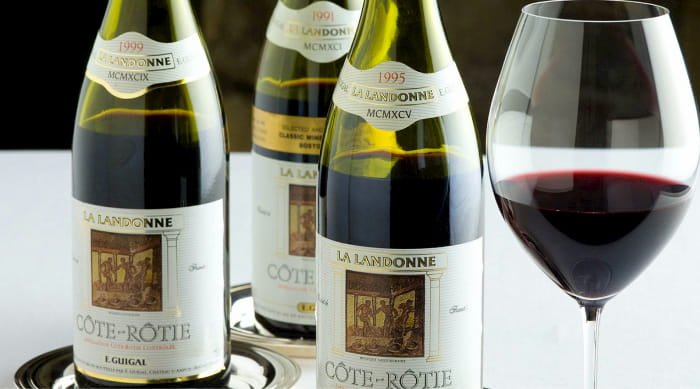
Cote Rotie wines are known for their aromatic intensity and fragrance. The dominant notes include raspberry, blueberry, plum, violets, green olives, and black currant.
Depending on the wine’s age, you’ll also notice hints of black and white pepper, leather, chocolate, smoked meat, and charcoal smoke.
10 Best Cote Rotie Wines in 2024 (Including Tasting Notes, Prices)
Here’s a handpicked list of the best Cote Rotie wines you should buy:
- 2015 E Guigal Cote Rotie La Landonne, Rhone, France ($480)
- 2016 Domaine René Rostaing Cote Rotie Cote Brune, Rhone, France ($1,420)
- 2018 Domaine Jean-Michel Gerin Cote Rotie La Vialliere, Rhone, France ($60)
- 2015 Domaine Jamet Cote Rotie Cote Brune, Rhone, France ($800)
- 2011 Marie et Pierre Benetiere Cote Rotie Le Dolium, Rhone, France ($598)
- 2015 E Guigal Cote Rotie La Mouline ($409)
- 1999 E Guigal Cote Rotie La Turque, Rhone, France ($856)
- 2016 Michel & Stephane Ogier Cote Rotie La Cote-Blonde, Rhone, France ($342)
- 2017 Vignobles Levet Cote Rotie La Chavaroche ($100)
- 1999 Delas Freres Cote-Rotie La Landonne, Rhone, France ($197)
1. 2015 E Guigal Cote Rotie La Landonne, Rhone, France ($480)
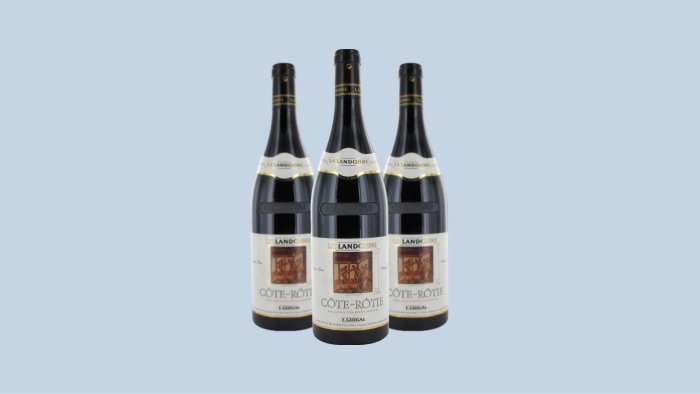
La Landonne by Guigal is a pure Syrah wine with medium-high acidity and tannins.
Its palate reveals a dominant tasting note of black cherry followed by subtle notes of espresso, dark chocolate, and licorice. The nose showcases blackberry, black currant, leather, and herb aromas.
Guigal was one of the oldest winemakers who practiced single vineyard bottling. Today the winery is managed by his sons Philippe Guigal and Marcel Guigal.
2. 2016 Domaine René Rostaing Cote Rotie Cote Brune, Rhone, France ($1,420)
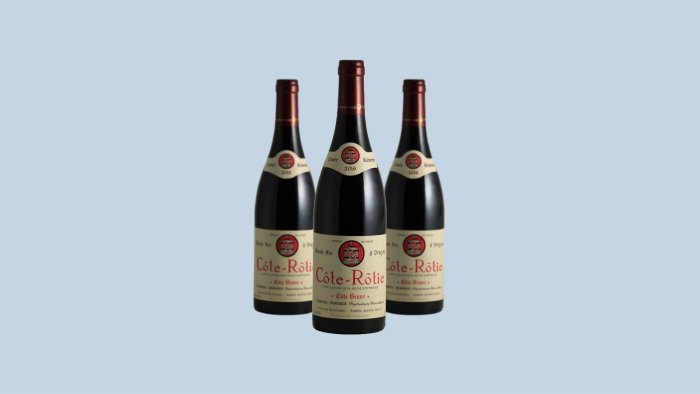
A deep ruby wine with purple hues, this Syrah vintage by René Rostaing has layers of cherry, plum, and purple fruit flavors and aromas. Youthful would be the most fitting word to describe this wine, thanks to its medium body and fresh acidity.
3. 2018 Domaine Jean-Michel Gerin Cote Rotie La Viallière, Rhone, France ($60)
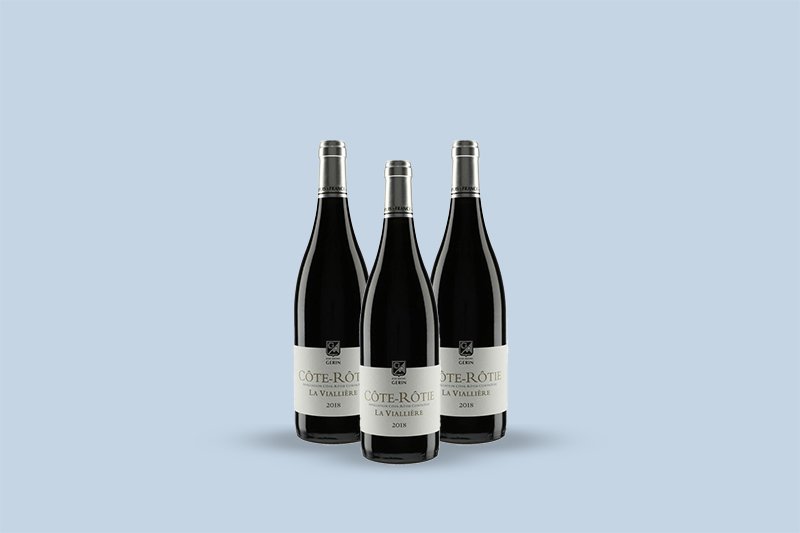
This bold and structured Syrah has refined tannins and dominant fruit characteristics. The dominant red fruit tasting note is followed by rich underlayers of herbs, bacon, and stony soil.
4. 2015 Domaine Jamet Cote Rotie Cote Brune, Rhone, France ($800)

This Côte Rôties Syrah is a thick and intense red wine with a medium body and deep tannins. Liquored blackberry and coffee aromas dominate the nose. On the palate, you get notes of cassis and earth with a peppery finish.
5. 2011 Marie et Pierre Benetiere Cote Rotie Le Dolium, Rhone, France ($598)
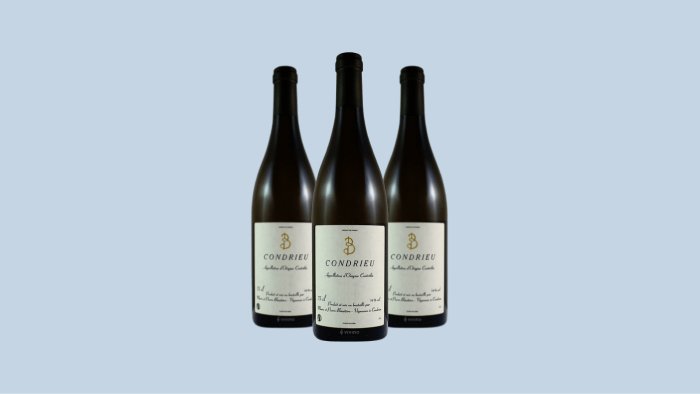
Although the wine has passed its youthful peak, it’s still developing its more mature flavors. The perfectly balanced tannins give this wine elegance and smoothness.
The palate is dominated by red fruit flavors and balanced acidity that ends with savory notes of minerals.
6. 2015 E Guigal Cote Rotie La Mouline ($409)
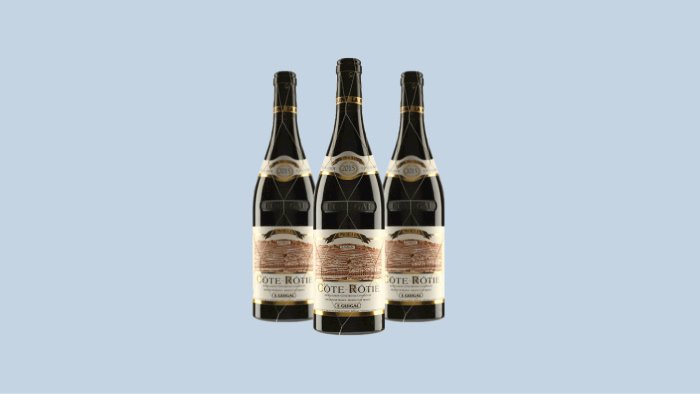
The nose of this French wine is dominated by dark fruit flavors like ripe blackberry and black raspberry with notes of exotic spice. On the palate, you’ll notice juicy red fruit flavor notes, with deep tannins and oaky notes of wood and violet.
7. 1999 E Guigal Cote Rotie La Turque, Rhone, France ($856)
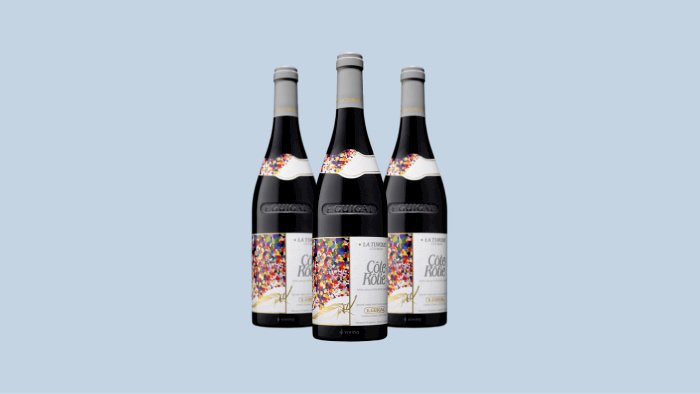
Full-bodied and intense, this wine is made with grapes sourced from old vines. The palate reveals flavors of black fruits, figs, and licorice with hints of black pepper, wood smoke, and incense.
The recent vintages - 2015 and 2017 - are great collectibles as well.
8. 2016 Michel & Stephane Ogier Cote Rotie La Cote-Blonde, Rhone, France ($342)

The 2016 Michel & Stephane Ogier Cote Rotie La Cote-Blonde is a deep and bright ruby wine with dry tannins that are expected to soften through the years.
Aromas of black raspberry dominate the nose with hints of red plum, pepper, and toasted spice. On the palate, you get dark fruit and violet flavors.
9. 2017 Vignobles Levet Cote Rotie La Chavaroche ($100)

This red wine has lush red fruit and exotic spice flavor hints. It is a smooth but complex wine that showcases the finesse of the Syrah grape variety.
Black fruit and violets overpower the nose and the palate.
10. 1999 Delas Freres Cote-Rotie La Landonne, Rhone, France ($197)
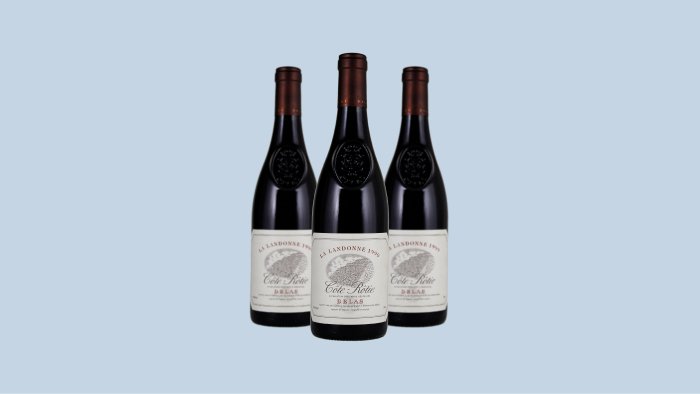
This French wine is layered and complex with bright acidity and the aroma of autumn leaves. On the palate, you get notes of dried fruit and herbs with a medium finish.
Investing in Cote Rotie Wine
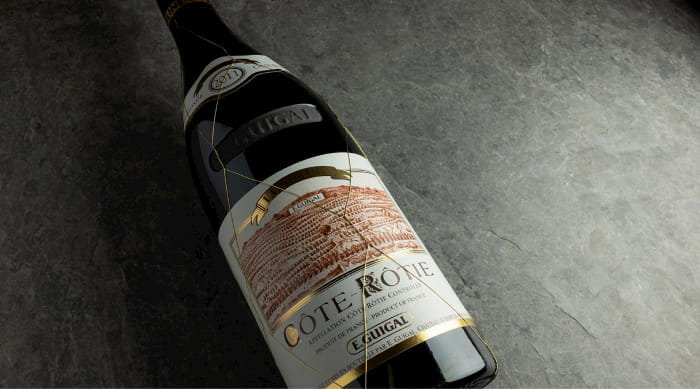
The easiest way to buy Côte Rôties wine is through a trusted wine investment company like Vinovest. The Vinovest AI-based platform can help you buy, store, and sell fine wine with just a few quick mouse clicks.
Now, here’s why you should invest in a Cote Rotie.
As Syrah grapes are high in acidity and tannin levels, the wine has an exceptional potential to age.
You can easily age a great Cote Rotie Syrah for 8 to 10 years. A bottle from a good winery like Rostaing or Guigal can easily age up to 20+ years.
When you’re out to buy Cote Rotie wine, look out for vintages including 2019, 2018, 2017, 2016, 2015, 2010, 2009, 2007, 2003, 2001, 1999, 1998, 1995, 1991, 1988, 1985, 1983, 1982, and 1978.
The most exceptional vintages also receive high scores from famous wine critics like Robert Parker (from the Wine Advocate), Jeb Dunnuck, and the Wine Spectator. They also have stable price appreciations over time. For example, between 2020 and 2022:
- The price of the 2016 Domaine René Rostaing Cote Rotie Cote Brune jumped by 208%, from $549 to $1,695.
- The 2014 Marie et Pierre Benetiere Cote Rotie Le Dolium grew by 30%, from $406 to $528.
These wines also perform well at auctions:
- 6 bottles of E. Guigal Côte-Rôtie La Landonne 1978 sold for $12,530 at a 2015 Christie’s auction.
- 5 bottles of 1991 Domaine Rene Rostaing Côte-Rôtie La Landonne sold for $2,800 at a Sotheby’s auction in 2022.
Cote Rotie Wine: Food Pairing and Serving Tips

Here are a few useful tips to follow if you plan on serving Cote Rotie:
When to Drink Cote Rotie Wine
Cote Rotie wines reach maturity around 10 years after aging. That’s when the wine starts revealing its more subtle flavor and aroma layers, and the tannins soften. Younger vintages have higher tannin levels and fruitier taste.
Should You Decant Cote Rotie?
If you have an older vintage at hand, it’s best to decant it to remove the wine’s sediments.
What Food to Pair Cote Rotie Wine With
Pair Cote Rotie wines with red meat dishes like a rare rib, beef, or roasted lamb to get the best of its flavors.
Dishes with garlic and herbs (like thyme and rosemary) also pair well with full-bodied Syrah wines from Cote Rotie.
Cote Rotie Vineyards and Terroir
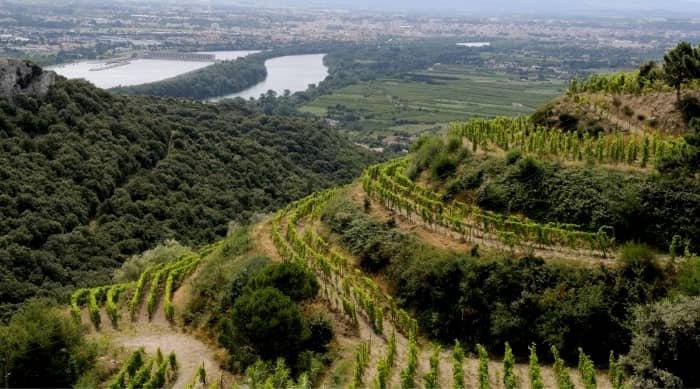
Sitting on the banks of the Rhône river in Northern Rhône, Cote Rotie enjoys a continental climate - unlike the Mediterranean climate of Southern Rhône.
It experiences wet winters with cold mistral winds that last till spring. The vineyards also face the challenge of fog in late spring that makes grape ripening difficult.
To aid vine growth, most vineyards are planted on the south and south-east facing slopes, so they get maximum sunlight - the reason Cote Rotie is called the “Roasted Slope”!
Cote Rotie is one of the steepest wine regions in the world. That’s why erosion is common in the area, and winemakers set up stone walls to protect the soils.
In fact, some farmers use buckets to carry the eroded soil back to the vineyard.
How are Cote Rotie Wines Made?
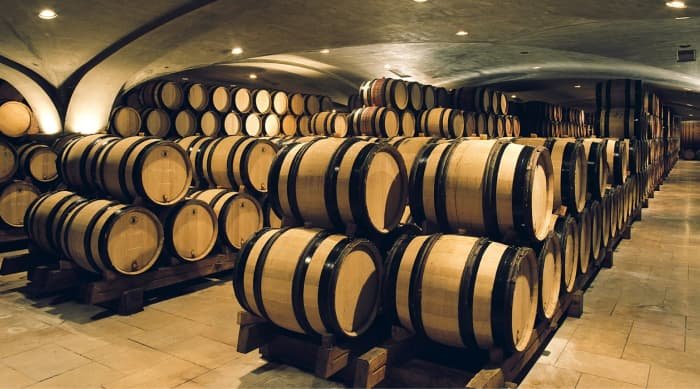
Cote Rotie has developed distinct wine styles over the centuries.
Winemaking in Cote Rotie can be broadly divided into two styles - modern and traditional style.
They differ in these four aspects:
- Ripeness of grapes: The wine style is decided during the grape ripening season. Modern style Cote Rotie requires higher phenolic ripeness, whereas traditional wines are lighter with great freshness and high acidity.
- De-stemming of grapes: Traditional winemakers keep the stems intact when adding grapes for fermentation, which increases the wine’s tannin levels. Modern-style wines tend to have lower tannin levels.
- Vinification: Modern-styled wines are vinified in temperature-controlled stainless steel tanks. On the other hand, traditional winemakers practice the ancient technique of cement vat fermentation.
- Aging: Traditional wines are aged in old oak barrel, while modern winemakers use new oak barrels to add oaky flavors of vanilla, tobacco, and spice to the wine.
A Brief History of Cote Rotie
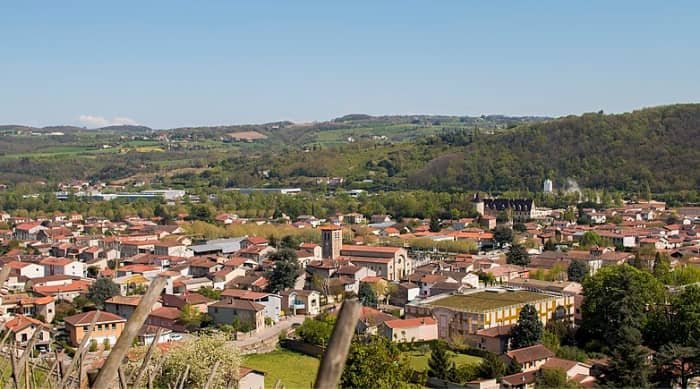
The Romans started viticulture in this Northern Rhone region under the rule of Emperor Caligula.
In 1829, winemakers started exporting their Cote Rotie wine outside the wine region.
At the time, Cote Rotie lagged behind the Hermitage wines, which are known for their stronger tannins and more intense color.
In the late 1800s, Phylloxera pests destroyed most vineyards in the wine region. Later, the two World Wars devastated the economy, and the Cote Rotie winemakers couldn’t afford the steep cost of maintaining vineyards.
By the early 1900s, Cote Rotie viticulture was limited to a mere 50 hectares of land.
Etienne Guigal is credited to have revived viticulture in this wine region in 1946. Guigal introduced new techniques (like aging wine in new oak barrels) and cemented the name of Cote Rotie wines among the best wines in the world.
Inspired by Guigal, other winemakers joined hands in developing the wine region. By the 1960s, Cote Rotie was on its road to fame.
Today, Cote Rotie is one of the most influential wine regions in France. The wine production has grown almost five times than during the crises - nearly two and half times of Hermitage.
Cote Rotie: A Rich Red Wine For Your Collection!
Cote Rotie wines are seductive and refined. They are not only great for drinking but also make great long-term addition to any wine collection.
From Guigal’s La Turque to Giren’s La Vialliere, there is a lot to choose from!
Just entrust the entire wine buying, authenticating, storing, and selling process to Vinovestwhile you sit back, relax, and sip your favorite red wine!
